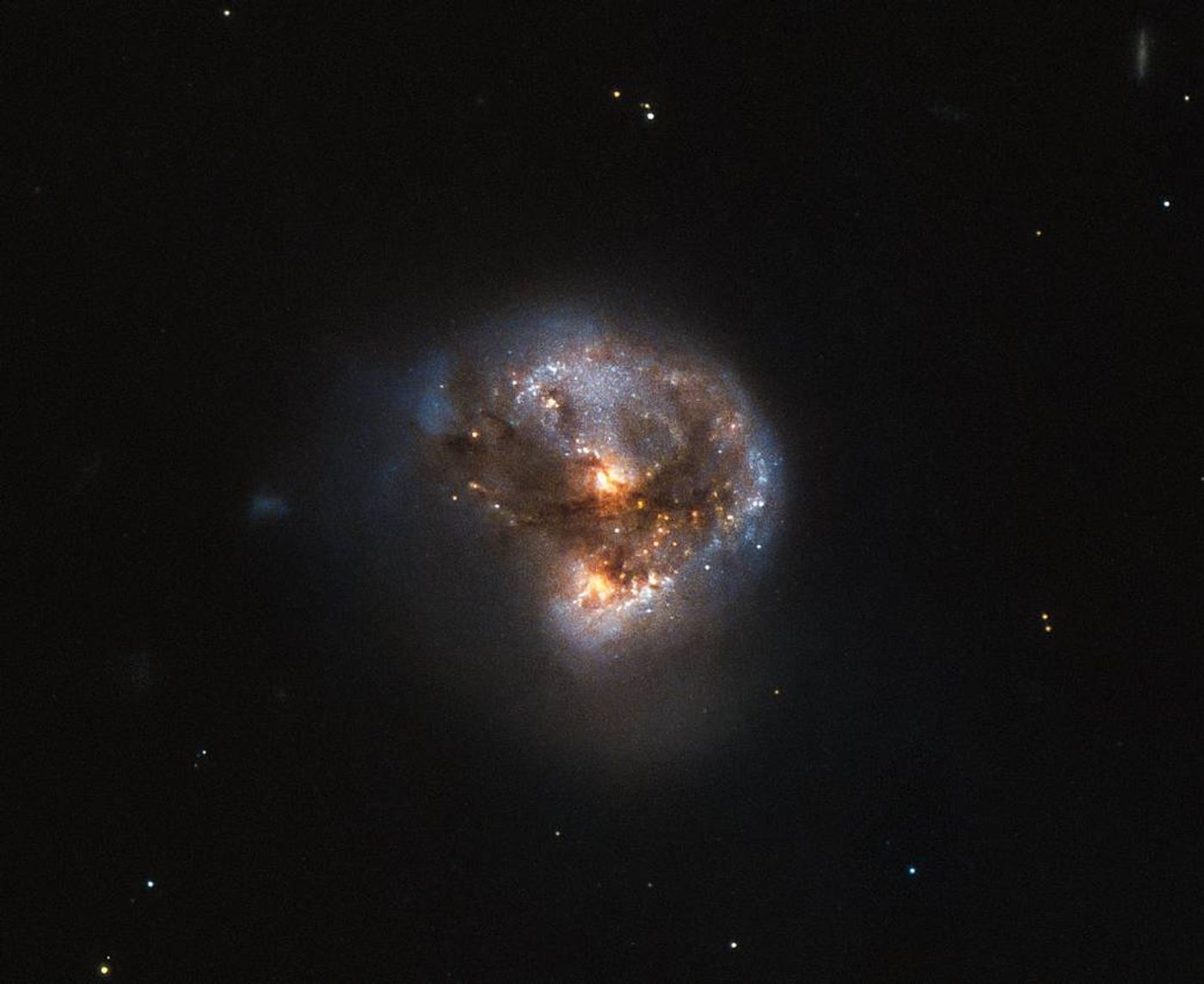Hubble Grabs Incredible Shot of a Cosmic Megamaser
Hubble Space Telescope is old, nearing three decades of age since its launch, but it’s still being used for space observation today by NASA and the ESA, and NASA recently used its onboard instruments to peer into something incredible.
Looking into a distant galaxy dubbed IRAS 16399-0937 with Hubble’s Advanced Camera for Surveys (ACS) and Near Infrared Camera and Multi-Object Spectrometer (NICMOS), which resides some 370 million light years away from Earth, NASA found what appears to be a megamaser.
The following image, shared by NASA in a statement, shows the image as captured by Hubble via various wavelengths:
Image Credit: ESA/Hubble & NASA, Acknowledgement: Judy Schmidt (geckzilla)
To understand what a megamaser is, you first need to know what a maser (microwave amplification by stimulated emission of radiation) is. Masers occur naturally, even in our own Mily Way galaxy.
It’s essentially a naturally-occurring source of stimulated spectral line emission of microwaves. A megamaser is the same thing, but as the prefix “mega” implies, it’s much larger. It’s a lot like a laser, but because it’s emitting microwaves rather than visible light, that’s why it’s called a maser, rather than a laser.
These emissions can happen in a variety of situations, but it appears the one coming from IRAS 16399-0937 is directly related to the congealed gas clouds inside the galaxy.
The galaxy IRAS 16399-0937 reportedly holds a double nucleus at its center. There are two cores that are currently about 11,000 light years apart from one another at the galaxy’s center that are working through the steps of merging with one another to form one larger one.
Each of these nuclei are pretty unique too. They’re very different from one another, as one of them has the conditions that are just right for star formation, while the other one is a low-matter nucleus with a black hole inside of it that astronomers estimate has up to 100 times the mass of our Sun.
While little is known about IRAS 16299-0937 at this point in time, what we do know is that it’s a pretty peculiar galaxy, and that megamaser is really quite awesome.
In the future, Hubble's successor, the James Webb Space Telescope (JWST) may provide more insight into what's actually going on out there. It has a significantly larger primary mirror, as well as more sensitive equipment. It's expected to launch some time next year, but a slight malfunction in some of its equipment might delay it slightly longer before if gets a chance to peer even deeper into the heavens than we ever have before.
Source: NASA









